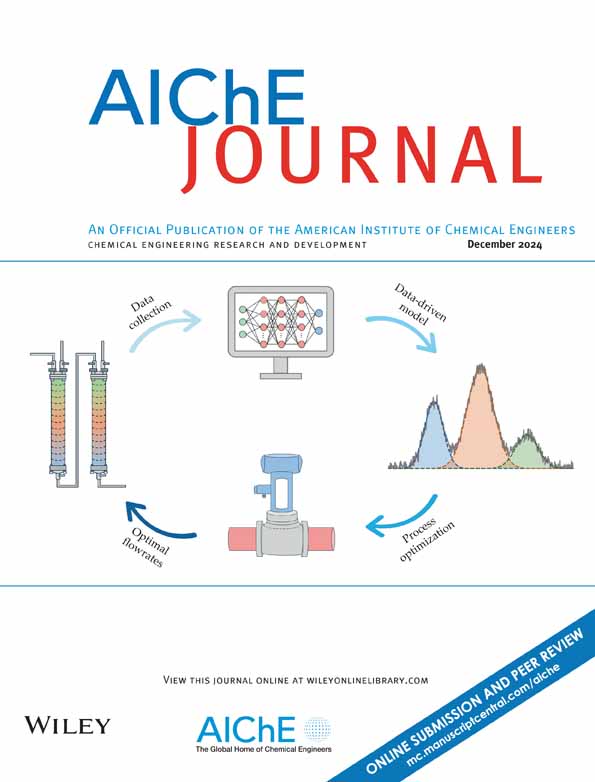Engineering homointerface-mediated mixed matrix membrane for propylene/propane separation
IF 3.5
3区 工程技术
Q2 ENGINEERING, CHEMICAL
引用次数: 0
Abstract
Achieving seamless integration between polymer-filler remains a significant challenge in gas separation mixed matrix membranes (MMMs), particularly with glassy polymers of intrinsic microporosity (PIMs). Here, we report a homointerface strategy for fabricating high-performance MMMs by the modulated synthesis of zeolitic imidazolate framework ZIF-8 fillers with amidoxime-modified polymer of intrinsic microporosity (AOPIM-1) oligomers, followed by being encapsulated within the long-chain AOPIM-1 polymer matrix. These AOPIM-1 oligomers serve a dual role: precisely modulating the crystal growth of ZIF-8 and establishing intimate homointerfaces between polymer-filler due to their intervening linker function. This strategy ensures excellent filler dispersion while preserving their interconnected network structure within MMMs, offering abundant percolating nanochannels. The resulting MMMs exhibited remarkably enhanced C3H6/C3H8 separation performance, with optimal combinations of C3H6 permeability (184.5–267.6 Barrer) and C3H6/C3H8 selectivity (23.9–28.9) outperforming state-of-the-art metal–organic frameworks (MOF)-based MMMs. This strategy presents an alternative strategy for the design of efficient MOFs/PIMs MMMs in the separation of challenging gas mixtures.求助全文
约1分钟内获得全文
求助全文
来源期刊

AIChE Journal
工程技术-工程:化工
CiteScore
7.10
自引率
10.80%
发文量
411
审稿时长
3.6 months
期刊介绍:
The AIChE Journal is the premier research monthly in chemical engineering and related fields. This peer-reviewed and broad-based journal reports on the most important and latest technological advances in core areas of chemical engineering as well as in other relevant engineering disciplines. To keep abreast with the progressive outlook of the profession, the Journal has been expanding the scope of its editorial contents to include such fast developing areas as biotechnology, electrochemical engineering, and environmental engineering.
The AIChE Journal is indeed the global communications vehicle for the world-renowned researchers to exchange top-notch research findings with one another. Subscribing to the AIChE Journal is like having immediate access to nine topical journals in the field.
Articles are categorized according to the following topical areas:
Biomolecular Engineering, Bioengineering, Biochemicals, Biofuels, and Food
Inorganic Materials: Synthesis and Processing
Particle Technology and Fluidization
Process Systems Engineering
Reaction Engineering, Kinetics and Catalysis
Separations: Materials, Devices and Processes
Soft Materials: Synthesis, Processing and Products
Thermodynamics and Molecular-Scale Phenomena
Transport Phenomena and Fluid Mechanics.
 求助内容:
求助内容: 应助结果提醒方式:
应助结果提醒方式:


